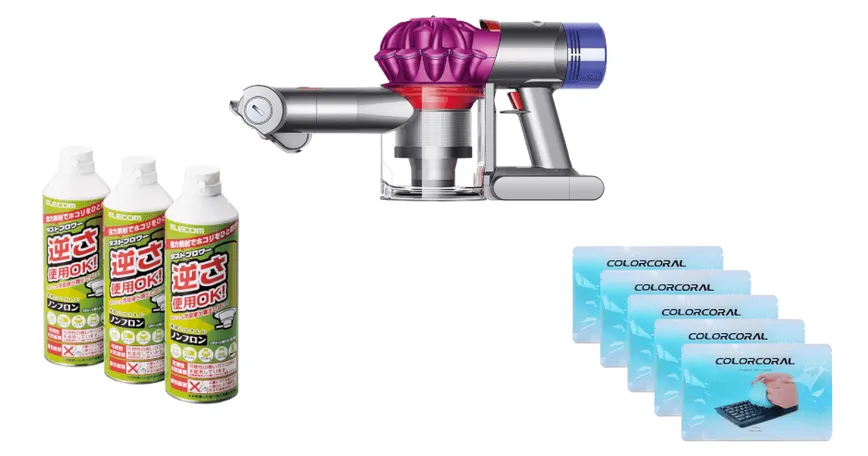
If you buy a mechanical keyboard, make cleaning a habit!
Mechanical switches have a very high input resistance frequency. However, the switches are therefore susceptible to dust. In this issue, we have compiled tips on how to clean a mechanical keyboard well and use it for a long time.
Modified at: 2024.10.9Posted at: 2022.9.5
Mechanical switches with high input endurance are also vulnerable to dust
Mechanical switches used in mechanical keyboards boast a high input endurance count of 30 million times. These switches are so durable that they will not break down for several years under normal use.
However, this is only on the premise that the switches are in the same condition as when shipped from the factory. The major difference between the environment in which the keyboard is shipped from the factory and the environment in which it is actually used is "dust contamination.
Unless the keyboard is used in a clean room, dust, hair, and other debris will inevitably get mixed in. Such debris can trigger mechanical switch malfunctions and cause chattering and other problems.
How to clean a mechanical keyboard
There are three main ways to clean a mechanical keyboard.
- "Exhale" with an air duster
- "suck it up" with a vacuum cleaner
- "Tangle" with a slime
"Spitting out" with an air duster
The major method is to "spit out" debris using an air duster.
This method is ideal for removing large pieces of debris because the powerful air pressure pushes dust and hair out of the switch. Moreover, it is very easy to clean without removing the keycap.
On the other hand, it is not necessarily the best choice for mechanical switches, as it may push fine dust and other particles out of the switch.
"Vacuuming" with a vacuum cleaner
The next major method is to vacuum it up with a vacuum cleaner.
While a regular vacuum cleaner often fails to properly remove dust, a cyclone vacuum cleaner or other vacuum cleaner with high suction power can be used to remove dust and other particles. The good thing about this method is that it does not push fine dust out into the switch. This prevents dust and other debris from pushing out inside the switch.
However, the disadvantage is that it is time-consuming because it is necessary to remove all the key caps in order to firmly suck out the dust.
"Tangle" with slime
Slime jelly for cleaning is often used to clean PC equipment.
This cleaning method involves pushing a squishy, deformable slime into the gaps between the keycaps to absorb debris.
The good thing about this method is that it has almost zero effect on the switch. Since the slime is adsorbed in the gap between the switches, it is not pushed out like an air duster, and the cleaning can be done without removing the keycap as with a vacuum cleaner.
However, if you use the slime without removing the keycap, the cleaning effect is not very high because you can only clean at the gaps between the keycaps.
Combine the three methods to effectively clean your keyboard!
We have introduced three cleaning methods, but they all have their advantages and disadvantages. Therefore, it is advisable to use different cleaning methods for different situations.
For small daily cleaning, it is convenient to use slime to quickly remove debris. However, this may not remove all the debris, so use an air duster to spit out the debris from the gaps in the keycaps. Doing these once a week or so will prevent mechanical switch failure.
Once every few months, remove all keycaps and thoroughly vacuum out the debris with a cyclone vacuum cleaner or similar.
Cleaning a keyboard is a tedious job, but daily accumulation is the secret to a long life of a mechanical keyboard, so make it a habit to "do it on weekends" or "do it after work every day" to maintain your precious mechanical keyboard well.